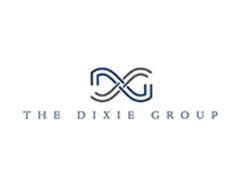The Dixie Group (DXYN) Reports Q1 2018 Results
Dalton, GA, May 3, 2018-The Dixie Group reported a net sales increase of 1.4% for Q1 2018, as compared to the same time period in 2017.
The company had a loss from continuing operations of $2,884,000, compared to a loss of $575,000 in the first quarter of 2017.
The company reports that its residential sales were up 7.3% for the quarter, while its commercial sales were down 9%.
Commenting on the results, Daniel K. Frierson, chairman and chief executive officer, said, “Our residential sales were up 7.3% for the quarter with the industry, we estimate, being flat as compared to the prior year. Our residential sales had solid growth with all three brands showing high single digit improvement during the quarter… Our commercial sales in the first quarter were down over 9% while the industry we believe was down in the mid-single digits. Our commercial broadloom sales were impacted more than our commercial modular carpet tile sales. We did benefit from the reorganization of our commercial business this past fall with lower selling and administrative expenses. Our commercial team, led by David Hobbs, has a number of new offerings for 2018 with particular emphasis on new modular carpet tile offerings.”
He continued, “Our gross profit for first quarter of 2018 was 21.8% of net sales as compared to a gross profit of 25.8% in 2017. During the first quarter of 2018, our sales and costs were negatively impacted by severe weather, which affected several of our east coast facilities in January. In addition, the launch of numerous, new, difficult to manufacture residential products severely impacted the throughput of our manufacturing operations in January and February, resulting in unabsorbed fixed costs. In addition, we had higher waste and off-quality issues as a result of the intensive effort to launch these new products during the quarter. We were further impacted by the quality initiative, which began in the fourth quarter of 2017 and completed in February of 2018, to reformulate all of our dye formulas to improve color matching through our continuous dye facility. Finally, our commercial sales were slow during the quarter, therefore, we had unabsorbed fixed costs through our facilities that produce primarily commercial products due to the lower production levels required to meet the lower demand. Our financial results improved throughout the quarter returning to profitability by March.”
Related Topics:The Dixie Group, Interface
